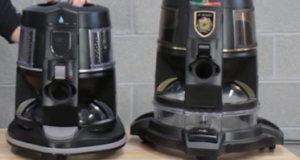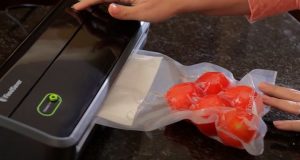My Vacuum Sealer Not Sealing
Since the 1940s, vacuum sealing has been the best solution for extending the shelf life of most perishable goods. Vacuum sealing can be beneficial, but only if the packaging equipment is properly maintained. In this article, we’re going to take a look at a common problem with a vacuum sealer not sealing properly and a few possible solutions that may save you a great deal of time and money.
Pressure Of The Vacuum Sealer
Bring your vacuum-sealed bag up to a light to see what’s happening. Seals with poor seal pressure will look spotty or broken. You might think you can fix your problem by adjusting the seal time, but that won’t provide you with the desired results. Most likely, your machine’s seal below or piston is leaking.
Your machine will either have bellows or pistons located on the lid or the deck, depending on the manufacturer. In both systems, compressed air or atmospheric pressure is introduced to pinch off and seal the bags inside the vacuum chamber. These bellows or pistons will likely leak over time, resulting in a spotty seal and dreaded leaks.
Temperature Of The Vacuum Sealer
The seal may pull apart too easily and not hold up in normal handling. Simply adjust the seal time so that the wire heats up faster. Maybe the seal wire you are using isn’t the right one. Each machine is designed to use a specific width, shape, and thickness of seal wire.
Replace the seal wire and Teflon tape according to the specifications of the manufacturer. You may also have a weak seal if your seal wire is not properly isolated from the bar itself. Most machines are equipped with metal sealing bars, usually made of aluminum. If properly cared for, these bars have significant advantages over fiber bars.
Electricity will follow the path of least resistance, so a weak seal may result from a seal wire not receiving the power it needs, so make sure your wires are properly isolated.
Flat Bag In The Vacuum Sealer
It is often the most obvious cause of a heat seal leak. Close the lid properly when laying bags across the bar. Ideally, the opening of the pouch should be laid flat across the bar and should be long enough to allow the mouth to close.
There is no doubt that size matters when using a vacuum pouch. Do not accept vacuum bags that are too short or too long just because your supplier does not carry them. Bags that are too large will be difficult to lay flat, as well as likely to develop creases around the seals.
A crease doubles the amount of plastic being sealed, and most machines aren’t designed to seal through four or more layers of material. Try laying your bags across the bar next time you’re vacuum sealing because this may be causing your leaks.
How to Fix Your Vacuum Sealer
A vacuum sealer is a blessing when it works, but if it does not seal automatically after sucking all the air out, then something is wrong. This is what you can do to fix it.
Suction Malfunctions
Close the latch completely. The latch should also be debris-free so use a damp cloth to clean it. Check the gaskets for debris and open the lid. They should be in place as well. If there is debris or dirt present, you should remove it and clean the gaskets. It is also important to disconnect the accessory hose before operating your machine.
Sealing Malfunctions
In the first method, rotate the bag at a 90-degree angle. The pouch should be run perpendicular with a smooth facing upward if the bag or pouch has textured or ridged surfaces. It is also important to stretch the material to make it flat. Curl the rim downward after that.
Your food items need three inches of extra space between them and the sealer. If the sealing bag contains liquid, freeze it before vacuuming. Moreover, some models fail to seal liquid-based items, which may cause malfunctions. You will have to pay for repairs. It is for this reason that you need to look at customer reviews before buying any vacuum sealer. By doing so, you can determine if the model can seal these items.
Power Issues
Check the outlet before you try anything. Plug it in again after removing it. Try plugging in a different appliance if it does not work. If it works with the other, you can try another. The other appliance is not working, so try another outlet.
There are many portable models out there that come with batteries. You should be able to see the LED light when you charge the battery. Your vacuum sealer may not be charging if you see it does not turn on. Then, you must shake the battery until the light appears. You could also buy a new battery. Why Is My Vacuum Sealer Not Sealing?
Conclusion
Vacuum sealers have sturdy, attractive, and unique designs. They may, however, still malfunction. In this post, we have just discussed some common issues that may arise when using a vacuum sealer. We also explain how to fix them. Hopefully, you will find them useful.




